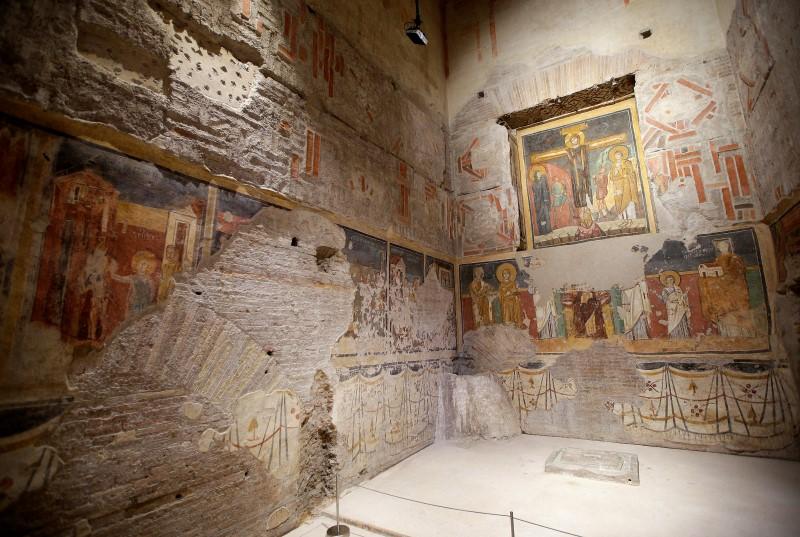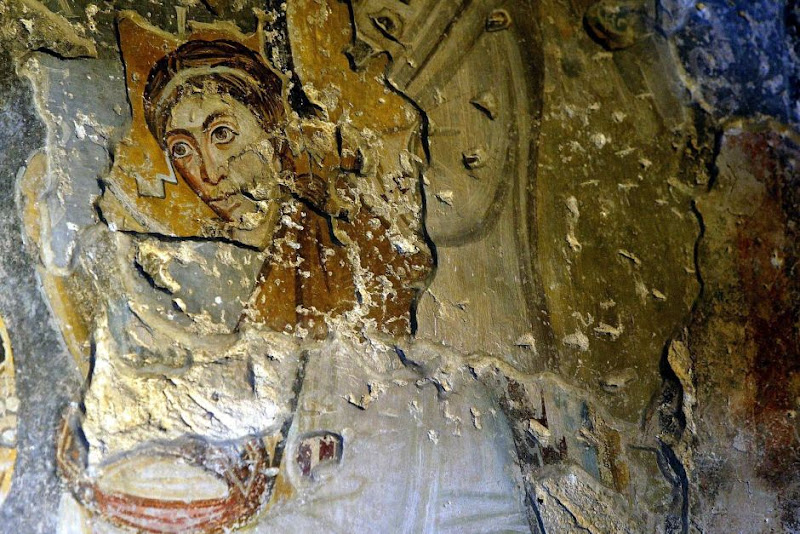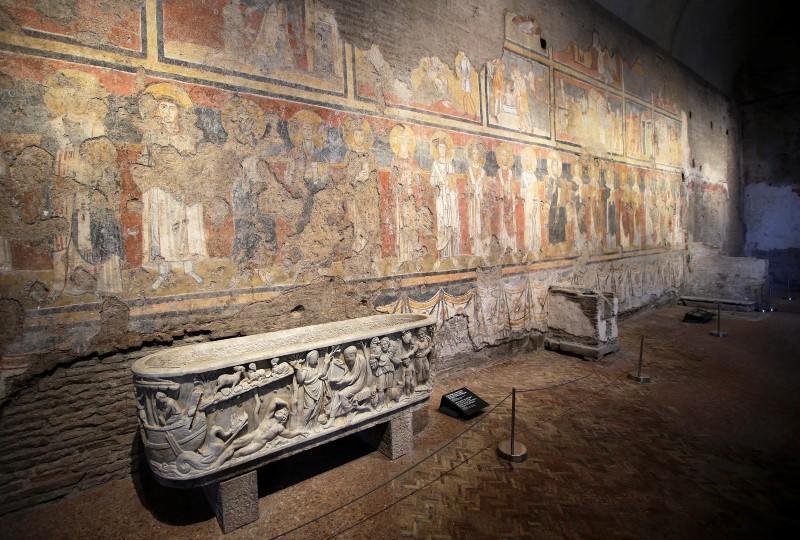A sixth-century church boasting a rare collection of early Christian art is reopening to the public in Rome after a restoration that took more than 30 years.


The interior's frescoes of saints and martyrs, queens, popes and emperors have now been restored at a cost of about 2.7 million euros ($3 million), funded by the Italian state and the World Monuments Fund.




"It collected the very best of figurative culture of the Christian world between Rome and Byzantium."
Among the treasures is a depiction of the Virgin Mary with child, one of the oldest known Christian icons in the world, which was moved to another church in Rome after the earthquake but has now been returned to Santa Maria Antiqua.
Standing under the reinstated icon, Andaloro said that the church was unique in escaping alteration during the Baroque period or the Counter-Reformation, during which other Roman churches were updated.
It has remained intact, untouched, even if heavily damaged by the passage of time, Andaloro said, though some alterations were made even during the relatively short time the church was in use.

Author: Isla Binnie | Source: Reuters [March 23, 2016]